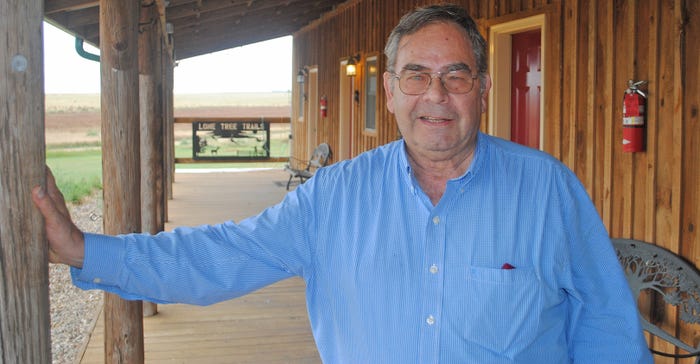
IF YOU BUILD IT: Bill Ferguson and his wife, Joan, are using high tech precision agriculture tools to establish permanent pheasant cover and wildlife habitat on their farm near Witten, S.D.
Bill and Joan Ferguson, Witten, S.D., have had great success increasing the pheasant population on their farm while increasing its productivity.
Lately, the Fergusons have been using precision ag tools to identity the most profitable areas for crops and the best areas for pheasant habitat.
"Bill and Joan are helping pheasants by using technology to plan, measure and adjust each acre of their farm operation," says Ryan Heiniger, Pheasants Forever Director of Agriculture and Conservation Innovations. "What makes them leaders in this is their willingness to truly analyze the results and then make changes."
Among first to no-till
Because annual precipitation on their farm is sometimes less than 20 inches per year, the Fergusons adopted no-till in 1980 before it was widely accepted.
"In those days, we had about half of our crop ground in summer fallow," Bill Ferguson says. "By 1982, we were 100% no-till."
Today, they use a stripper head to harvest wheat. The stripper header leaves 30 inches of straw standing, allowing pheasants to spread out in the field, making it harder for predators to find them.
"The first year we used the stripper head, we observed maybe one pheasant per acre," Bill Ferguson says. "Three years later, we were getting three birds per acre."
The Fergusons use historic yield, satellite and topography maps dating back to 1996 to locate low productivity areas, particularly wet spots that carry water through the growing season, where the land could be better utilized as permanent cover.
"We like tall wheatgrass in wetter areas which usually have natural kochia adjoining," Bill Ferguson says. "Switchgrass and sweet clover are planted on drier soils. As with precision ag seeding, we try to match the mix of species to the particular conditions."
In newly seeded buffer and filter strips planted where high moisture is an issue, weeds are not an enemy.
"Pheasants love kochia in our waterways," he says. "We keep noxious weeds controlled. But kochia is fine. We try to let it be wild" for the good of pheasants and other wildlife.
Adjacent to wild areas, tall wheatgrass provides roosting habitat. Cover crops within the fields benefit pheasant populations, particularly when nothing is hayed on the farm.
It’s the close proximity of all the different types of habitat, cover and grain crops that has helped increase the pheasant population, Heiniger says. Together, they create a larger habitat area than each area alone.
"We have never released a pen raised bird, and we never will," Bill Ferguson points out. "The birds on our farm are wild."
Pheasant hunting tradition
Since the early 1980s, the Fergusons have hosted teams in South Dakota’s annual Governor’s Pheasant Hunt. Former governors Bill Janklow, George Mickelson, Walter Dale Miller and Mike Rounds have hunted on their farm.
The Fergusons turned an old schoolhouse near the farm headquarters into a lodge for hunters. The huge complex, which has expanded into several new bedrooms in a motel style addition to the schoolhouse lodge, has all the amenities for long-term stays by hunters. The main lodge includes a large kitchen; a dining room; living, sleeping and entertainment areas; and an outdoor space for grilling. It’s set on a wide-open spot on the South Dakota prairie.
"We have regular corporate hunting groups coming in each fall," Bill Ferguson says. "Some of the hunters have been coming here for 15 to 25 years."
With the success the Fergusons have had mixing habitat with grain crops, hunters will likely continue making the trip for many more years to come.
About the Author(s)
You May Also Like






